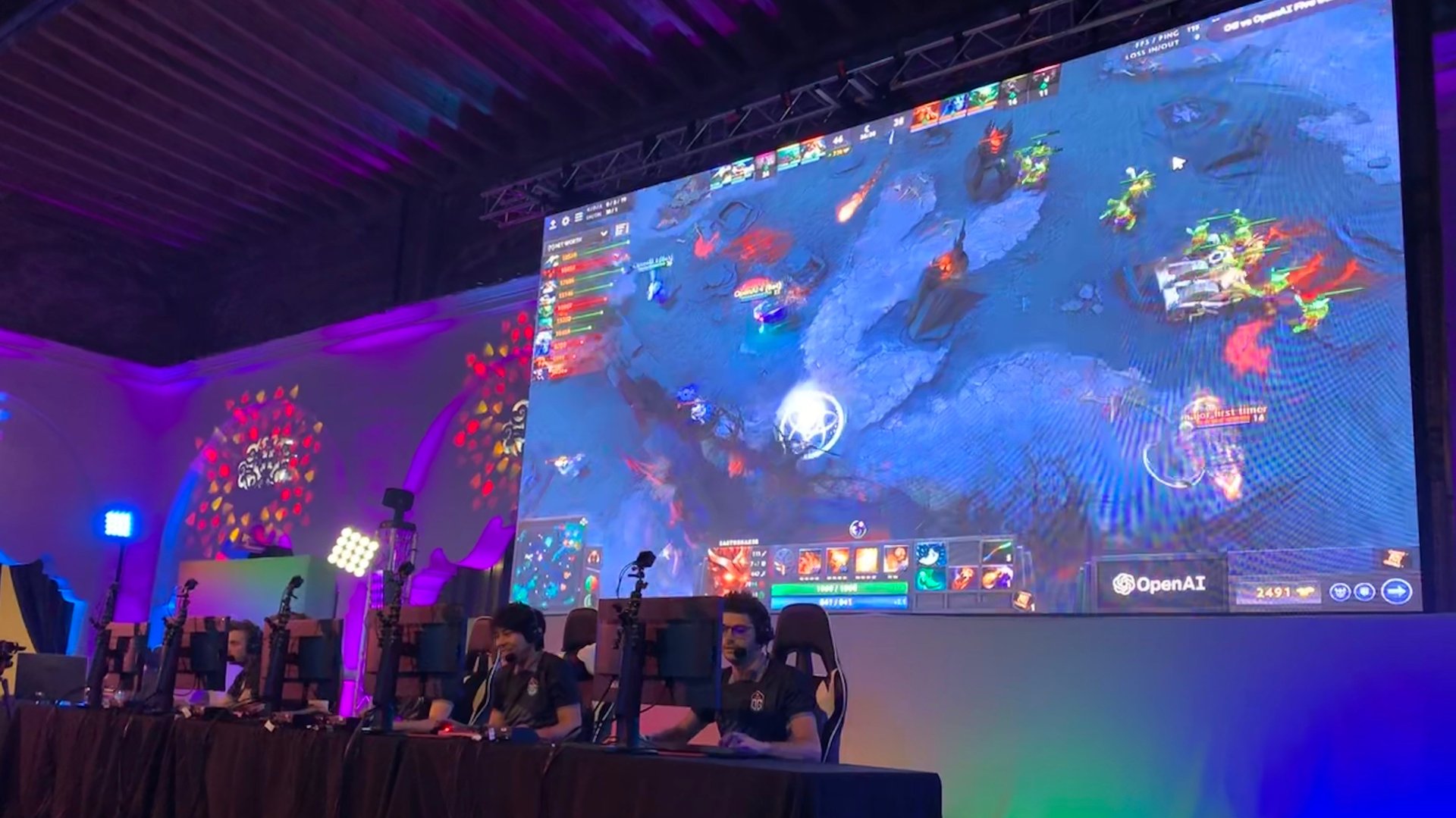OpenAI bots just trounced pro players of “Dota 2.” Now what?
Mastering the real-time online video game Dota 2—played by professionals for $20 million prizes—is the latest milestone for artificial intelligence.


Mastering the real-time online video game Dota 2—played by professionals for $20 million prizes—is the latest milestone for artificial intelligence.
Yesterday an algorithm developed by OpenAI, a research group focused on artificial intelligence, beat the pro gaming team OG at an event in San Francisco, winning the first two matches in a best-of-three series. The first game was close, with the humans surviving more than 40 minutes, while the second match took less than 20 minutes for the AI software to win.
Ultimately, though, OpenAI’s goal is not to create algorithms that are great at playing games. It’s to create “artificial general intelligence,” co-founder Sam Altman told Quartz.
AGI is the idea that algorithms could quickly learn and perform a wide of a variety of new tasks just as people do. Humans can adapt to situations and learn skills with incredible speed, at least relative to today’s AI. By contrast, it took the OpenAI algorithm 10 months to master Dota 2. During that time it simulated 45,000 years of gameplay.
“For something that is wet and hot and error prone, the compute density of the human brain is amazing,” Altman told reporters before the match. To rival the brain’s power, he believes, computers will have to grow in size, becoming as big as the room-sized behemoths of yesteryear. In some ways, that’s already the trend. In addition to its own stack of hardware, OpenAI uses multiple cloud providers’ data centers to train its algorithms, Altman noted.
Winning on Saturday was just proof that OpenAI could solve the particular problem of how to master Dota 2. Now OpenAI has to reset its sights on what the next big challenge is going to be.
Filip Wolski, an AI researcher at the organization, says the next challenge could involve more complex games, such as ones where communication is more important or controlling six-plus characters is required.
“Or instead of the Dota environment, let’s try to take this thing that trained for 10 months, and maybe we can come up with techniques to train it in a month, or a week, or less than that,” Wolski said. “One thing we have to figure out is which of these paths is going to push us furthest along in research toward building very complex AI, and closer to [AGI].”
Altman says another area of research, outside of making AI less computationally intensive (and therefore cheaper to train as well), could be adapting AI to work well in less perfect simulators. Video games like Dota 2 are ideal simulators because the AI is training in the same digital scenario as the final test of the system. For something like organic chemistry, where the goal might be to generate new drugs to treat previously untreatable diseases, there aren’t good simulators because we can’t recreate every potential molecular reaction in the human body. Experts told Quartz in 2017 that building better simulators is a necessity if AI ever wants to tackle these real-world problems.
“How do we build algorithms that work well with very imperfect simulators, and then transfer them to the real world?” Altman said. “That will be an important area for us.”
Correction: A previous version of this article referred to OpenAI as a nonprofit AI research lab. OpenAI recently changed its structure from a nonprofit to a capped-profit limited partnership.